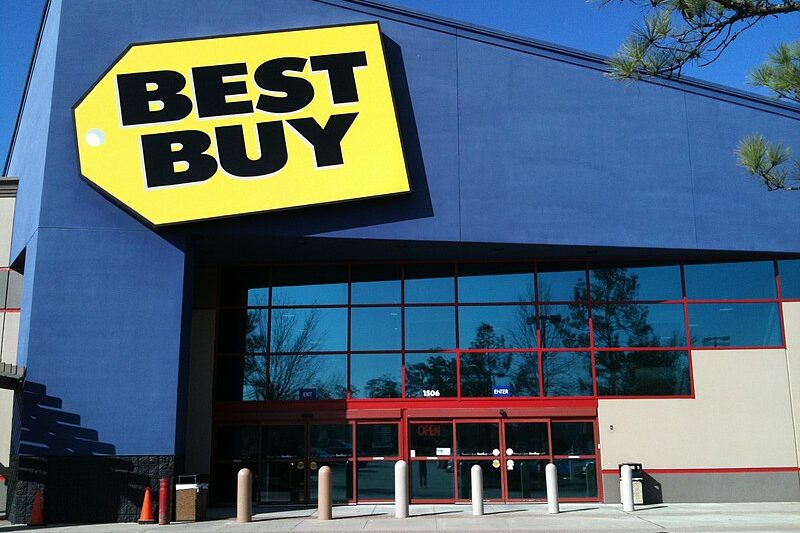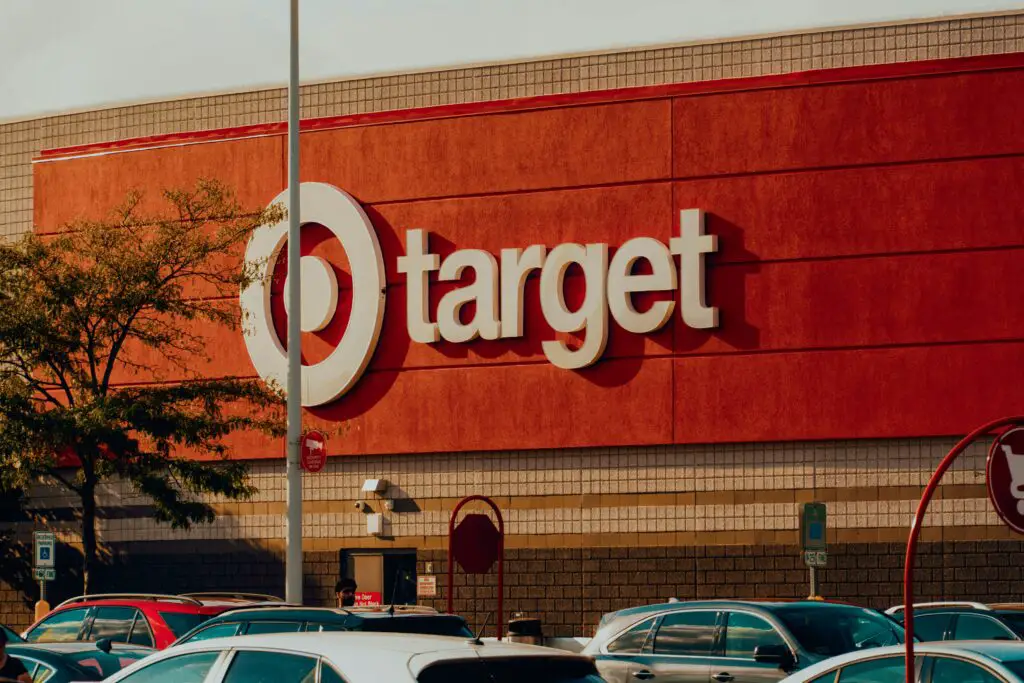The retail landscape is undergoing rapid changes, with major brands scaling back their brick-and-mortar presence to adapt to shifting consumer habits. Online shopping, changing market trends, and economic pressures have forced many once-thriving retailers to downsize significantly. In 2025, several well-known chains will be closing hundreds of stores, marking a continued transformation in the industry.
1. Best Buy

Best Buy, a leader in consumer electronics retail, is reducing its physical store footprint in 2025 as part of a larger shift toward digital sales and streamlined operations. With the rise of e-commerce and the growing preference for online shopping, Best Buy has been adapting its business model to meet the demands of the modern consumer. The company has seen significant growth in online sales, and it is focusing on enhancing its digital experience to remain competitive. As a result, Best Buy will close certain underperforming stores and focus more on its profitable locations.
The closures in 2025 are a reflection of broader industry trends where retailers are rethinking their physical presence in favor of investing in digital tools and improving e-commerce capabilities. Best Buy continues to emphasize services like Geek Squad and its expanded online product offerings, which have helped the company maintain its relevance in a rapidly changing market. By investing more in its digital platform, Best Buy is looking to streamline its operations and position itself for future growth. As it continues to evolve, the company is also expanding its presence in areas like home automation and smart home technology.
2. Target

Target has a long history of evaluating its store footprint and making adjustments as needed to maintain operational efficiency. In 2025, the retail giant plans to close several underperforming locations as part of its ongoing strategy to optimize its real estate holdings. Over recent years, Target has shifted its focus to digital sales, investing heavily in e-commerce, and integrating online and in-store shopping experiences. However, not all brick-and-mortar stores have been able to keep pace with the rise of online shopping, and some locations have struggled to generate sufficient foot traffic. As a result, Target has made the decision to close stores in areas where demand has significantly dropped.
The company is leveraging its digital platform to continue growing and meeting consumer demands, even as it scales back its physical presence. The closures in 2025 are part of a broader trend in the retail industry where companies reassess their store strategies to align with changing shopping habits. For example, Target’s expansion of same-day delivery services and curbside pickup options highlights its commitment to digital innovation. These moves are expected to enhance convenience for customers while driving growth in the e-commerce sector.
3. Macy’s

Despite its status as one of America’s most iconic department stores, Macy’s has not been immune to the struggles facing traditional retail. The company has announced plans to shut down several locations in 2025 as part of its ongoing effort to streamline operations. While its flagship stores in high-traffic urban areas remain popular, many suburban locations have struggled with declining foot traffic. Macy’s has been investing heavily in digital sales and smaller, more efficient store formats, but this has not been enough to offset losses in underperforming locations.
The rise of e-commerce and changing shopping behaviors have put significant pressure on the brand. In an attempt to remain relevant, Macy’s has expanded its online presence, introduced new store concepts, and enhanced its loyalty program. However, experts believe that the company will continue to downsize over the next decade. As reported by Retail Wire, Macy’s decision to close stores is part of a broader trend affecting traditional department stores.
4. Kohl’s

Kohl’s, one of the leading department stores in the United States, has been facing significant competition in recent years, particularly with the surge of e-commerce and discount retailers. In response to these pressures, the company has been streamlining its operations and focusing on its most successful stores. As part of this shift, Kohl’s plans to close several locations in 2025. The rise of online shopping and changing consumer habits have forced many brick-and-mortar retailers, including Kohl’s, to adapt to a more digital-first model.
Despite these challenges, the company has made efforts to diversify its offerings, including the addition of more in-store experiences and collaborations with popular brands. Kohl’s also continues to invest in its digital infrastructure, with an emphasis on improving its online shopping experience. This includes expanding its digital marketplace and enhancing its e-commerce fulfillment capabilities. While some stores will close, the company is committed to strengthening its digital presence and catering to the evolving preferences of its customer base. Retail analysts have noted that these closures reflect broader industry trends, where traditional retail businesses are adjusting to the new digital economy.
5. CVS

CVS, a pharmacy and healthcare giant, is undergoing a significant transformation to better align with the changing needs of its customers. In 2025, the company will close a number of its physical locations as part of its strategic shift toward expanding health services and enhancing its digital presence. As consumers increasingly turn to online platforms for shopping, the traditional retail pharmacy model is becoming less effective in certain areas. CVS is responding to this change by focusing on providing more personalized healthcare services and building out its digital capabilities, such as telehealth and prescription delivery.
These efforts reflect the broader trend of pharmacies and healthcare providers increasingly shifting their operations to meet the demand for digital services. The closures in 2025 are part of CVS’s ongoing efforts to streamline its operations, focusing on key locations that are better suited for its new service-driven approach. With an emphasis on expanding health clinics and telemedicine, CVS aims to transform its stores into wellness hubs rather than traditional retail outlets. The company’s future success depends on leveraging both physical locations and its growing online services.
6. Walgreens

Walgreens, another leading pharmacy chain in the U.S., has announced plans to close some of its stores in 2025 as part of a major transformation. The company is pivoting toward a more digital-first approach, focusing on digital health services and providing a more streamlined retail experience. The shift is driven by the growing demand for telemedicine and other digital health solutions, which have become increasingly popular during the COVID-19 pandemic. Walgreens aims to enhance its digital platform by offering virtual consultations and improving its online pharmacy services.
This strategy is in line with broader trends in the healthcare and retail industries, where companies are integrating digital technologies to meet the needs of tech-savvy consumers. The closures of certain stores are part of Walgreens’ efforts to focus its resources on more profitable locations while expanding its health services and digital offerings. By decreasing its reliance on physical stores, Walgreens hopes to create a more efficient business model that can better serve its customers in an increasingly digital world.
7. Gap

Gap, the clothing retailer that also owns Old Navy and Banana Republic, has been reassessing its retail strategy and is set to scale back its physical store presence in 2025. The company is focusing on its most successful locations while enhancing its online shopping experience. Over the years, Gap has faced growing competition from fast fashion brands, online retailers, and changing consumer preferences. As a result, the company is shifting its focus to e-commerce, investing in its digital infrastructure to better compete in the ever-evolving retail market.
By consolidating its store locations and prioritizing high-performing areas, Gap aims to maintain profitability in an increasingly challenging landscape. The closures in 2025 reflect a broader trend in the retail industry, where many companies are shifting their focus from physical stores to digital-first models. While the company plans to reduce its brick-and-mortar footprint, it will continue to invest in the growth of its online presence, offering an improved customer experience through its e-commerce platform. Gap’s strategy includes enhancing its digital marketing efforts and improving supply chain efficiency to meet the growing demand for online shopping.
8. JCPenney

JCPenney has been a fixture in American shopping malls for decades, but the rise of e-commerce and shifting consumer habits have placed it in jeopardy. The retailer has attempted multiple turnaround strategies, including store redesigns, updated branding, and a focus on online sales, but these efforts have yielded mixed results. In 2025, JCPenney is set to close numerous underperforming locations in an effort to consolidate its operations. The closures come as part of the company’s broader strategy to focus on its most profitable stores while reducing overall operating costs.
Despite some success with its online expansion, JCPenney has struggled to regain the loyal customer base it once had. The competition from retailers like Amazon, Target, and fast-fashion brands has further contributed to its decline. Analysts predict that JCPenney will continue to shrink in size over the coming years, and its long-term future remains uncertain. According to CNBC, JCPenney’s recent closures are part of an industry-wide shift away from traditional department stores.
